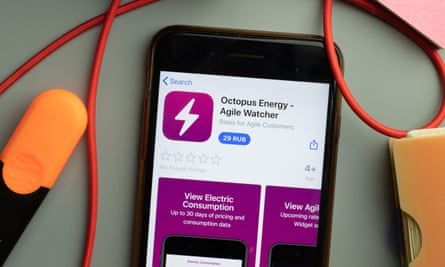Households and businesses in Great Britain will be paid to cut back on their electricity use between 5pm and 6pm on Monday, in the first real test of a National Grid scheme. With temperatures dropping sharply, the electricity system operator hopes to reduce strain on the grid by reducing consumption. The initiative, which has only been used as a test up to now, will take place during the early evening peak in Britain’s energy demand. Here, we examine how the scheme works.
What is the ‘demand flexibility service’?
The service gives those people who have signed up to the scheme discounts when they avoid using power, such as putting their washing machine or dishwasher on earlier or later than they typical would. The scheme is only open to businesses and households with a smart meter whose supplier or aggregator is one of the 26 firms to have signed up. More than 1m households and businesses have signed up to participate and most suppliers have closed the scheme to new participants.
The household suppliers include British Gas, E.ON, Octopus Energy and EDF. National Grid said last month that Britons had saved almost £3m by using tumble dryers and other power-hungry devices at quieter times during trials.
Coal power stations fired up and customers paid to cut energy use in UK cold snapRead more
How does it work?
Through the smart meter, energy firms monitor usage every 30 minutes. Companies will give households 24 hours’ notice that a “saving session” is upcoming, and it will require customers to reduce their consumption by at least 30%. The greater the reduction, the greater the discount, which is automatically applied to the bill.
Consumers are likely to use various methods to save power during the period – including making sure none of their devices are charging, or pushing back meal times. A household’s power use will be compared with their normal usage for that time of day, and they will receive about £3 for every kilowatt hour saved.
 View image in fullscreenThe scheme was first trialled by Octopus Energy early last year. Photograph: Postmodern Studio/Alamy
View image in fullscreenThe scheme was first trialled by Octopus Energy early last year. Photograph: Postmodern Studio/Alamy
What are its origins?
The scheme was first trialled by Octopus Energy early last year through a pilot with about 100,000 customers, designed to reduce the demand on the electricity network and engage consumers more actively with their energy use.
However, it took on greater significance when concerns arose over blackouts this winter. National Grid said in October that in an extreme scenario – such as Russia cutting off gas supplies to Europe and a simultaneous cold snap – there could be rolling blackouts this winter. The Grid formally launched the service in November and most big suppliers have signed up since.
How did trials of the scheme go?
Several pilot sessions took place before Monday. Some users complained they saved just pennies, while others were enthusiastic, tweeting pictures as they walked their dogs during the saving sessions. Financially savvy comedian John Robins said he sat in the dark with just the wifi and the fridge left on. “I probably took it a bit too far,” he said. Robins added that his supplier, Octopus, offered loyalty points for the best savers. “As soon as something is turned into points I’m onboard. I saved 93% of my usual energy and was in the top 10% of savers – which means more points.”
skip past newsletter promotion
Sign up to Business Today
Free daily newsletter
Get set for the working day – we’ll point you to all the business news and analysis you need every morning
Enter your email address Enter your email address Sign upPrivacy Notice: Newsletters may contain info about charities, online ads, and content funded by outside parties. For more information see our Privacy Policy. We use Google reCaptcha to protect our website and the Google Privacy Policy and Terms of Service apply.
after newsletter promotion
Is it worth it?
A key question around this scheme is whether altering your everyday habits is worth the money saved. When the idea was originally mooted, suppliers voiced concerns to National Grid that the saving offered was not generous enough to change behaviour.
The Grid later increased the incentive sixfold, encouraging more suppliers to sign up. It estimates that households could save up to £100 over the five months of the scheme, which runs until March. “I think the first [saving session] earned me 59p, which is not a superb use of my time and energy in financial terms,” says Robins. “But I’d like to think it’s more about changing peoples habits and making us realise how much unnecessary energy we use. Hopefully I’ll implement some of the changes I made for that hour outside of the savings sessions too.”
Will it keep the lights on?
In the short term, it’s unlikely the flexibility service will significantly move the dial on Britain’s energy usage. However, industry watchers hope it will signal a sea change in attitudes towards energy usage, encouraging people to save power. Fintan Slye, the director of National Grid’s electricity system operator, wrote in the Guardian that he wanted businesses and homes to become “virtual power plants”. He hopes the scheme could free up about 2 gigawatts (GW) of power, enough for about 1m homes.
However, the Grid has some breathing space. Although winter contingency plans such as coal-fired power plants are being called upon, analysts believe the chances of rolling power cuts this winter have receded as gas prices have fallen because of mild weather and strong storage levels in Europe.



